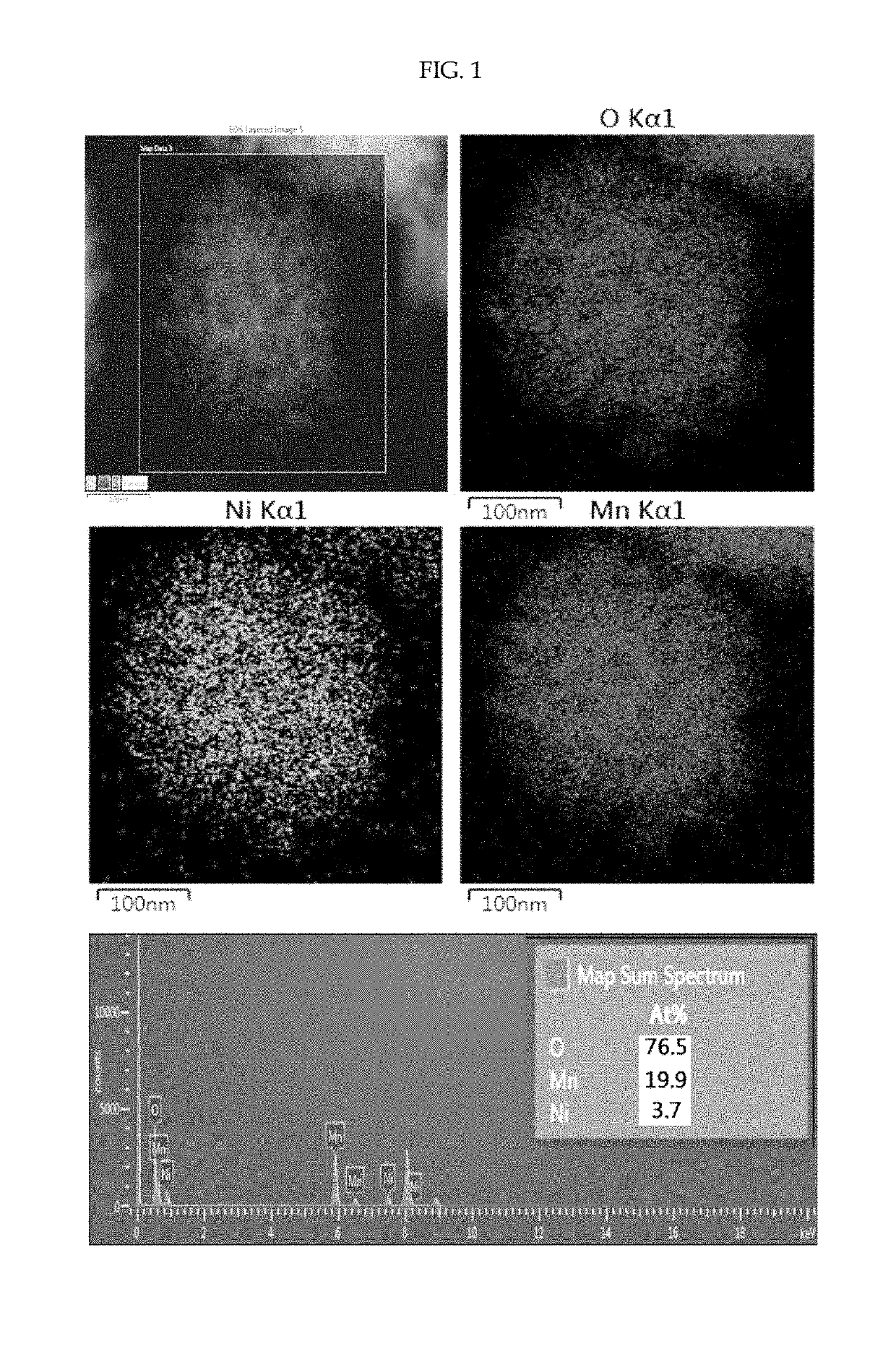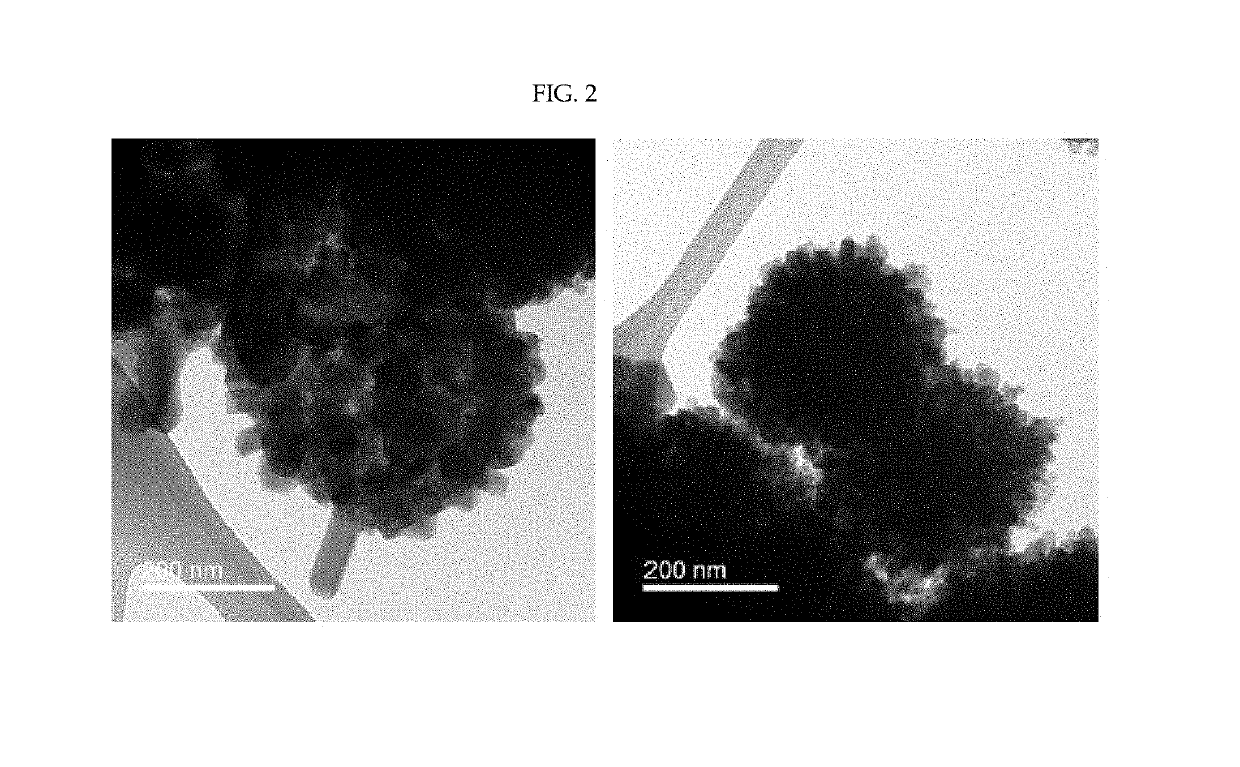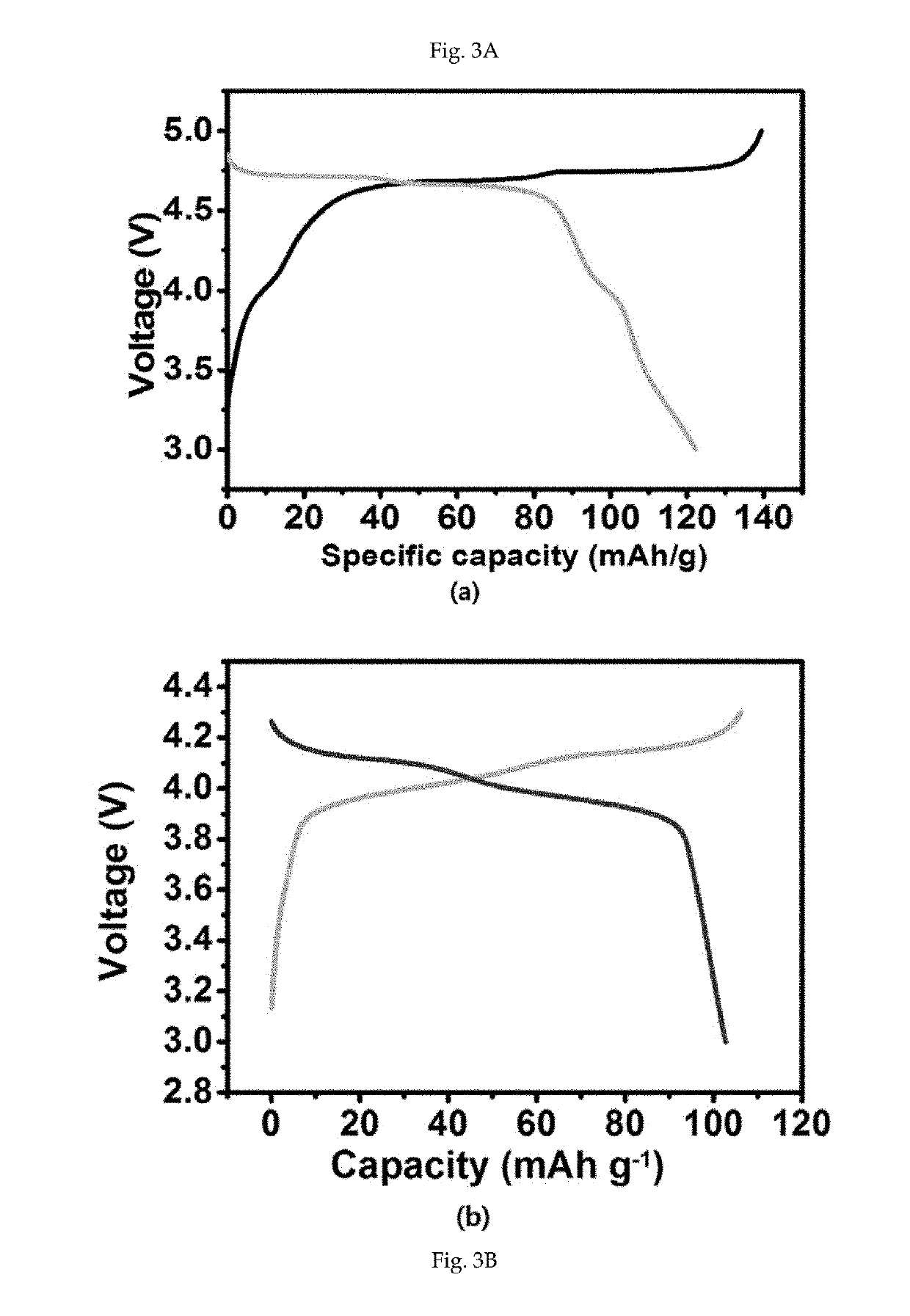Cathode active material for lithium secondary battery, manufacturing method thereof, and lithium secondary battery including the same
a lithium secondary battery and active material technology, applied in the direction of cell components, cell components, electrochemical generators, etc., can solve the problems of high power, high cost, disadvantageous stability of compound, and the inability to meet the requirements of high capacity and high power, so as to achieve the effect of simple process, easy manufacturing of cathode active materials, and low cos
- Summary
- Abstract
- Description
- Claims
- Application Information
AI Technical Summary
Benefits of technology
Problems solved by technology
Method used
Image
Examples
example 1
[0069]A first solution was prepared by mixing 0.1 M barium manganate (BaMnO4) with 100 ml of distilled water. Then, 2.8 ml of 4 M sulfuric acid(H2SO4) was slowly added to the first solution, ultrasonic waves with 750 W power, 50% amplitude, and 20 kHz frequency were applied for 5 minutes, and a thus prepared metal-mixed solution was centrifuged. A supernatant of the centrifuged metal-mixed solution, 400 ml of distilled water, and manganese sulfate (MnSO4) were mixed and kept in a stationary state at 1-minute intervals to suppress a temperature increase at 750 W power, 50% amplitude, and 20 kHz frequency, and the mixture was applied with ultrasonic waves for 30 minutes and stirred at room temperature for 3 hours.
[0070]Then, the mixture was filtered using distilled water and ethanol and repeatedly washed and dried in a 100° C. oven for 12 hours to obtain manganese dioxide (MnO2) powder.
[0071]Ni(NO3)2·6H2O, LiOH and manganese dioxide (MnO2) were mixed with 10 ml of ethanol at a molar r...
PUM
| Property | Measurement | Unit |
|---|---|---|
| frequency | aaaaa | aaaaa |
| temperature | aaaaa | aaaaa |
| temperature | aaaaa | aaaaa |
Abstract
Description
Claims
Application Information
 Login to View More
Login to View More - R&D
- Intellectual Property
- Life Sciences
- Materials
- Tech Scout
- Unparalleled Data Quality
- Higher Quality Content
- 60% Fewer Hallucinations
Browse by: Latest US Patents, China's latest patents, Technical Efficacy Thesaurus, Application Domain, Technology Topic, Popular Technical Reports.
© 2025 PatSnap. All rights reserved.Legal|Privacy policy|Modern Slavery Act Transparency Statement|Sitemap|About US| Contact US: help@patsnap.com



